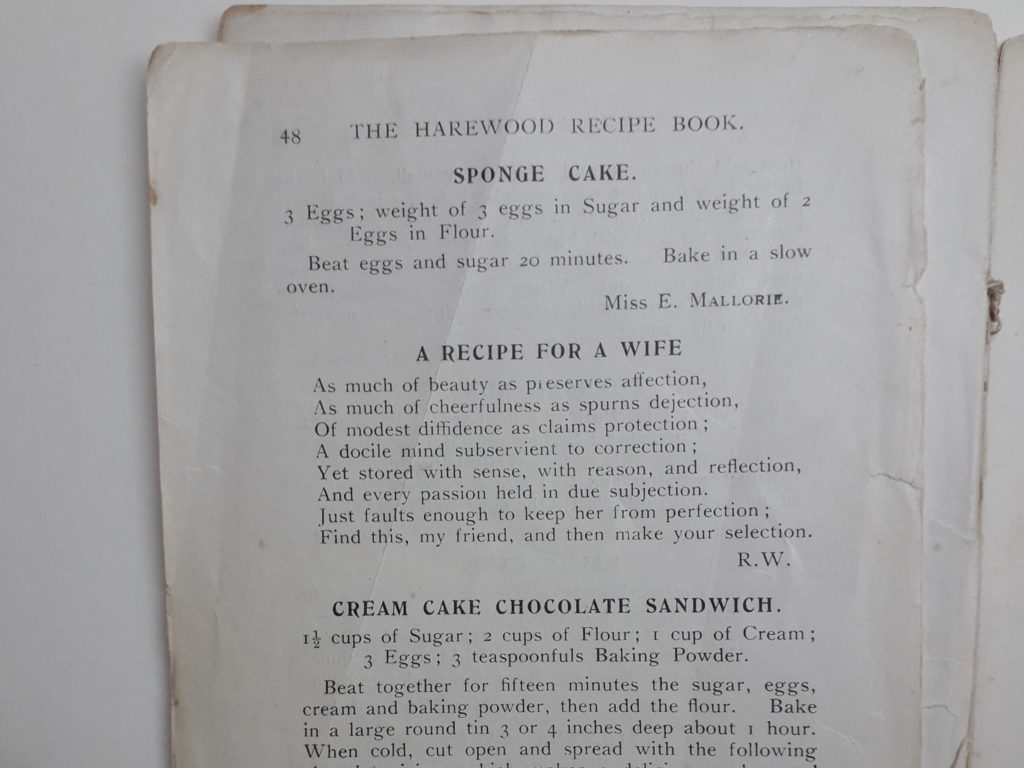Simnel Cake and the Harewood Recipe Book
Rebecca Burton, Assistant Curator & Archivist
Over the years, Harewood has celebrated Easter much like we do today – by the making and eating of traditional food. Recently, we have been able to explore Harewood’s food history in more detail than ever before, through the discovery and donation of a Harewood recipe book – prior to which had been completely unknown to us.
The book was published in 1909, presumably by the Harewood parish council, with the hope of using the proceeds to raise funds for a new organ in the parish church. It was printed locally in Leeds and is made up of contributions from various individuals living in the area, from villagers and locals to Lascelles family members. It even includes ‘branded’ offerings – for example how to create Keen, Robinson & Co.’s barley water, a precursor to the famous soft drink produced by Robinsons today.
In terms of the recipes themselves, there’s a surprisingly varied assortment: soups, meat and fish dishes (as well specifically labelled vegetarian ones), savouries, puddings, sauces and sweets, cakes and pastries, jams, wines, ales, pickles, as well as ‘sick-room cookery’ and ‘household remedies and hints’. The book also contains some ‘joke’ entries too – such as recipes for a ‘scripture cake’ and ‘how to cook a husband’.
One of the recipes included in the book is for Simnel Cake – a light fruit cake with a marzipan-like topping. It is traditionally baked and eaten during the Easter period and decorated with 11 balls (or “eggs”), symbolising Jesus’ 12 disciples, minus Judas. Harewood’s recipe was provided by ‘O. Ranson’, most likely Olive Ranson, who served as a VAD nurse at Harewood during the First World War.
Her recipe is, by today’s standards, lacking in instruction – offering little more than a list of ingredients (all provided, of course, in imperial measurements). Whilst frustrating for the novice baker (like myself!), it is perhaps illustrative of the fact that the method for making traditional and basic cakes would already have been well understood and practiced within the community. The lack of oven temperature and cooking times is demonstrative of the fact that cooking equipment at the time did not come fitted with thermostats; instead, measuring baking times and temperatures would have been done by hand (literally – to feel the temperature of an oven), as well as by eye and instinct.
For those of you that might want to try Harewood’s historic Simnel Cake recipe, a transcription is provided below. For ease, I have adjusted the amount of ingredients to make one cake (as opposed to two, as suggested in the original recipe) and added metric conversions in brackets. I have also supplied a basic method for baking, though again, this was not part of the original recipe.
Harewood_House_Simnel Cake Recipe
Follow Harewood on social media @HarewoodHouse to have a slice of #HarewoodatHome this Lockdown.
